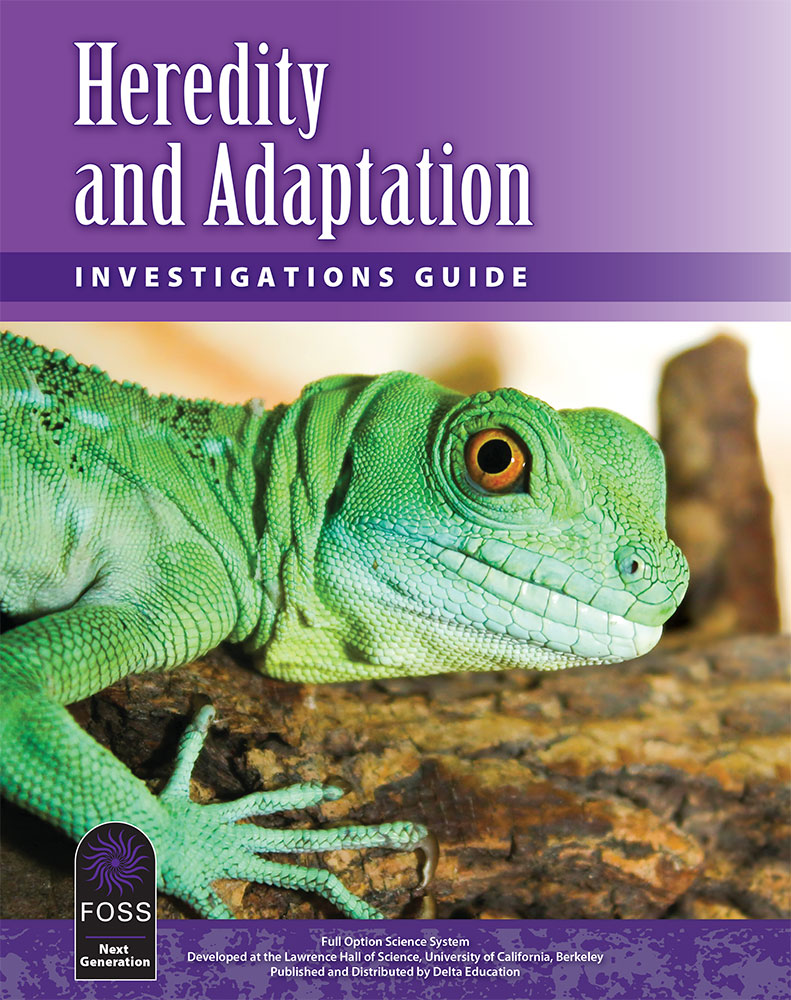FOSS Next Generation Heredity and Adaptation
Grades 6-8

Life on Earth is a dizzying array of diversity. Yet all life, no matter the diversity, shares common characteristics. The theory of evolution is the unifying principle that explains both the similarity and diversity of life and is supported by a wide variety of observable evidence. In the Heredity and Adaptation Course, students explore the evidence, including the fossil record, the similarities between past and present organisms, the genetic principles of inheritance, and how natural selection produces adaptations that lead to changes in species and eventually the creation of new species.
Investigation 1: The History of Life
Students are introduced to the big question that drives the course: How can we explain the diversity of life that exists on Earth? They take a tour of the fossil record, looking for evidence of the existence, diversity, and transitions in life throughout Earth’s history.
Investigation 2: Heredity
Students start this investigation with an exploration of evolutionary relationships. They examine a family tree and build a cladogram. Students build a model for how traits are inherited, starting with themselves and moving to a population of imaginary animals, larkeys. They learn about the basis of heredity, chromosomes and genes, and how genetic variation arises in populations. Students use Punnett squares to predict the probability of trait inheritance when the genetics of the parents are known.
Investigation 3: Evolution
Students consider how mutations lead to variation in a population. They see how positive mutations lead to adaptations and how natural selection works, leading to changes in populations over time. They consider the evidence for the theory of evolution. Finally, they research genetic technologies that humans use to influence inheritance and disease.